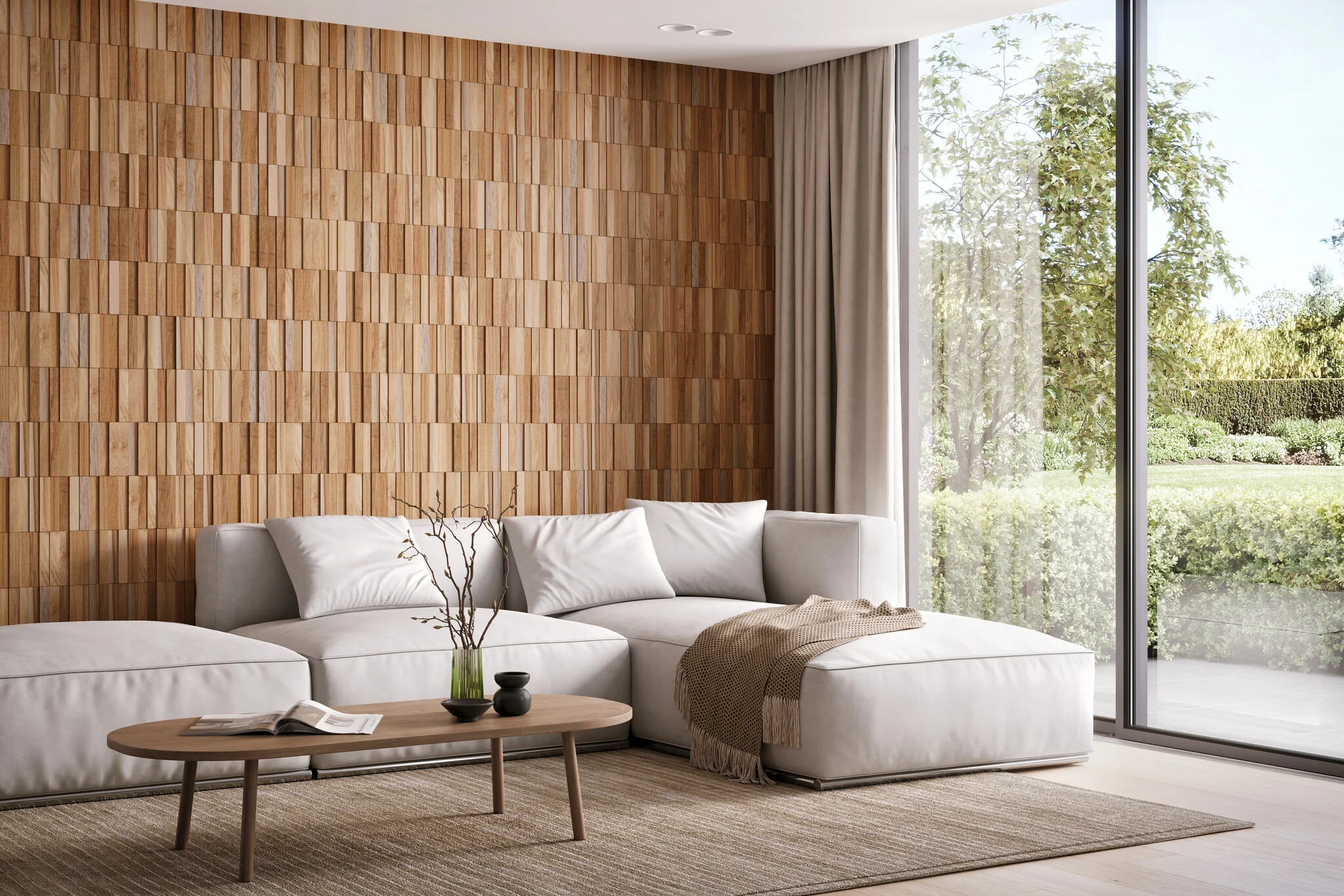In interior design, few elements divide opinion like the black slat wall. While some see it as a bold, contemporary feature that adds luxury and texture, others argue that it makes interiors appear gloomy, cramped, and less inviting. Despite its popularity in modern and industrial-themed designs, critics are increasingly voicing concerns about how this dramatic wall treatment affects lighting and mood.
So, is the black slat wall really a décor disaster? Or is it simply misunderstood and misused? Let’s dive into the realities of black slat walls and explore how they can either work for or against your space.
Understanding the Appeal of Black Slat Walls
Bold Aesthetics and Visual Drama
The black slat-wall has carved out a niche for homeowners and designers wanting to make a striking visual statement. The dark color draws attention, offers contrast, and helps hide imperfections on walls. It’s often paired with neutral furnishings, metallic accents, or high-contrast lighting for a moody, upscale vibe.
Modern, Minimalist Charm
Black slat walls also appeal to those embracing modern minimalism. The clean lines and uniform spacing of slats add order and depth without overwhelming a room. In high-end showrooms and luxury interiors, they offer a sleek backdrop that emphasizes structure and symmetry.
The Downside: Why the Black Slat Wall Faces Criticism
Light Absorption That Shrinks the Space
The most common complaint about the black slat wall is that it absorbs natural and artificial light, making rooms feel darker than they actually are. This effect is most noticeable in smaller rooms or spaces that lack sufficient sunlight. Instead of enhancing ambiance, the dark tones may result in a cave-like environment.
Psychological Impacts: Gloom and Claustrophobia
Darker hues like black can evoke feelings of heaviness, melancholy, or even claustrophobia if not balanced properly. Critics of the black slat wall argue that it can lead to a sense of discomfort or unease, especially when used excessively or in poorly lit environments.
A Design Choice That Limits Flexibility
A black slat wall can be visually overpowering and limit future design flexibility. Once installed, it often dictates the room’s entire aesthetic. Homeowners who later wish to redecorate may find that this dark feature doesn’t blend easily with lighter, softer themes.
Common Mistakes When Installing a Black Slat Wall
Ignoring Natural Light Sources
Using a slat wall in a room without windows is a recipe for visual discomfort. Many people fail to consider how much light will be absorbed by the black surface, and how little will remain to reflect around the space.
Overuse of Dark Elements
Pairing a black slat wall with dark floors, ceilings, or furniture can create an uninviting space. Without contrast—like white ceilings, light-colored flooring, or reflective surfaces—the result is often a room that feels heavy and enclosed.
Poor Placement and Sizing
Installing a black slat wall on all four walls, or in a narrow hallway, amplifies the shrinking effect. Instead of creating a feature wall or a dramatic focal point, some users inadvertently overwhelm their space.
How to Make a Black Slat Wall Work
Strategic Lighting Is Key
Proper lighting can neutralize many of the negative aspects of a slat wall. Incorporate recessed lighting, wall washers, or LED backlighting to add brightness and draw attention to the slat’s texture rather than its darkness.
Contrast with Light Colors
One of the most effective ways to make a black slat wall functional is to balance it with lighter tones elsewhere. White walls, cream furniture, or light oak floors can keep the space open and inviting. This contrast not only offsets the darkness but also accentuates the wall’s structure.
Limit to a Focal Area
Rather than committing to an entire wall, consider using black slats in smaller doses: behind a TV, along a hallway entry, or as a headboard feature. This prevents the design from dominating the space while still delivering impact.
Choose the Right Material Finish
Matte finishes tend to absorb more light than semi-gloss or satin finishes. Choosing a slat wall with a subtle sheen can help reflect some light and keep the room feeling less heavy. Alternatively, pairing black slats with wood grain texture can soften the overall look.
Better Alternatives to Consider
If you’re drawn to the elegance of black but hesitant about its impact, consider:
- Charcoal gray slat walls: Slightly softer, with more forgiving lighting effects
- Walnut or dark oak tones: Offer depth without full light absorption
- Black-and-wood hybrids: Blend visual drama with natural warmth
These alternatives still provide bold visual interest but with more forgiving ambiance and flexibility.
SlatSolution: Rethinking Dark Design with Purpose
At SlatSolution, we understand that not every design element fits every space. While the black slat wall remains a popular trend, our design consultants help clients evaluate where and how to implement it without compromising comfort or aesthetics.
Our collection includes a wide variety of slat wall options—from bold blacks to natural oaks—engineered with acoustic benefits and modern finishes. Whether you’re updating a home office or building a dramatic feature wall, we help you balance design, light, and functionality.
Final Thoughts: Use with Care, or Don’t Use at All
The black slat wall is not inherently bad—it just demands intentional use. Its bold character can elevate a space or suffocate it, depending on how it’s integrated. Before committing, assess your room’s lighting, dimensions, and long-term design goals. When used in moderation and paired with bright, reflective elements, a black slat wall can become a stylish focal point. But when overdone or installed without planning, it may indeed cast an unflattering shadow over your space. All categories and top stories are featured right on the homepage.
FAQs
1. Can I use a black slat wall in a small room?
You can, but it’s risky. In small rooms, a black slat wall can make the space feel even smaller and darker. To balance the effect, use bright lighting and contrast it with light-colored surroundings.
2. What lighting works best with black slat walls?
Accent lighting like LED strips, spotlights, or wall washers work well. These lighting types highlight the texture of the slats while reducing the visual heaviness of the black tone.
3. Is a black slat wall suitable for bedrooms?
Only if used strategically. A black slat wall behind the bed as an accent can add luxury, but avoid using it on multiple walls. Always ensure ample lighting to maintain a cozy, not gloomy, ambiance.










Leave a Reply